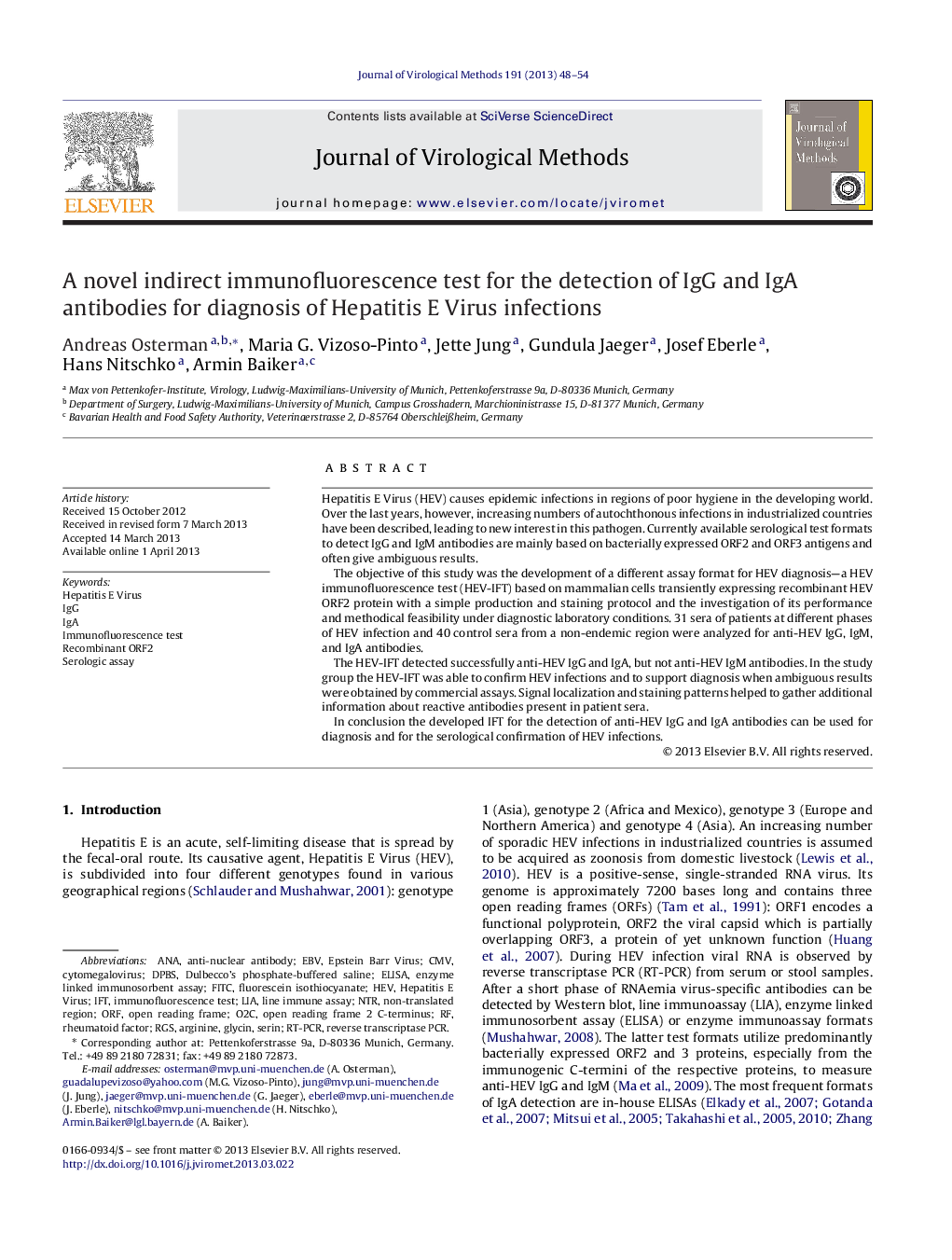| Article ID | Journal | Published Year | Pages | File Type |
|---|---|---|---|---|
| 3406643 | Journal of Virological Methods | 2013 | 7 Pages |
•We present a novel indirect immunofluorescent test for anti-HEV Ig detection.•Stained mammalian cells transiently express recombinant ORF2 protein.•The test confirms commercial anti-HEV IgG assays and detects reliably anti-HEV IgA.•The assessment of the signal localization and staining pattern is a crucial factor.•Our protocol is simple and feasible under diagnostic laboratory conditions.
Hepatitis E Virus (HEV) causes epidemic infections in regions of poor hygiene in the developing world. Over the last years, however, increasing numbers of autochthonous infections in industrialized countries have been described, leading to new interest in this pathogen. Currently available serological test formats to detect IgG and IgM antibodies are mainly based on bacterially expressed ORF2 and ORF3 antigens and often give ambiguous results.The objective of this study was the development of a different assay format for HEV diagnosis—a HEV immunofluorescence test (HEV-IFT) based on mammalian cells transiently expressing recombinant HEV ORF2 protein with a simple production and staining protocol and the investigation of its performance and methodical feasibility under diagnostic laboratory conditions. 31 sera of patients at different phases of HEV infection and 40 control sera from a non-endemic region were analyzed for anti-HEV IgG, IgM, and IgA antibodies.The HEV-IFT detected successfully anti-HEV IgG and IgA, but not anti-HEV IgM antibodies. In the study group the HEV-IFT was able to confirm HEV infections and to support diagnosis when ambiguous results were obtained by commercial assays. Signal localization and staining patterns helped to gather additional information about reactive antibodies present in patient sera.In conclusion the developed IFT for the detection of anti-HEV IgG and IgA antibodies can be used for diagnosis and for the serological confirmation of HEV infections.
